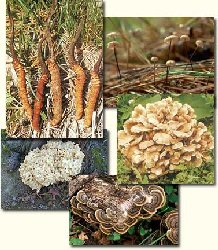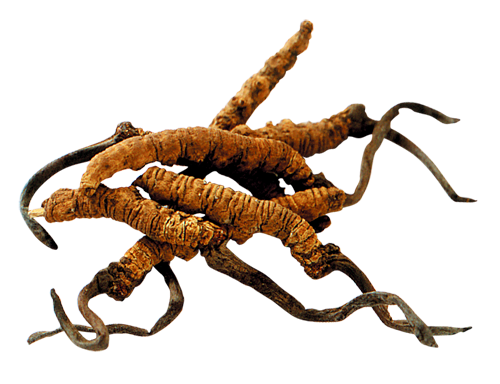Shop News
-
25/11/2025Ganoderma Benefits
-
07/02/2025Colds & Flu - treatment and prevention
-
24/01/2025Ginseng - Nature's anti-inflammatory
-
23/01/2025Curcumin Benefits
-
02/05/2024Allergies Tradicional Chinese Medicine
-
12/03/2024Food Combining and Chinese Medicine
-
23/08/2023Phytoestrogens
-
05/06/2023Ginseng Benefits
-
02/06/2023Aumento de precios de la marca Blue Poppy
-
20/07/2022Infertility and Chinese Medicine
-
10/05/2022Allergic Rhinitis
-
24/03/2022TCM Obesity and Its Causes
-
23/03/2022Cancer Prevention and Diet
-
26/01/2022Medicinal Mushrooms
-
18/12/2021Christmas Remedies
-
09/07/2021CANDIDIASIS
-
03/03/2021Chinese Herbal Medicine formula studied to improve cancer therapy
-
12/01/2021The benefits of Xiao Yao San
-
15/09/2020Coronavirus Protocol (summary)
-
01/06/2020TCM Principles for Weight Loss
-
12/02/2020Take Good Care of Your Qi
-
01/01/2020Cordyceps Sinensis Benefits
-
01/12/2019Prevention & Treatment of Colds & Flu
-
27/04/2019ANXIETY - causes and treatments
-
26/03/2019Prostatitis and Chinese Herbs
-
01/03/2019What is an Adaptogenic Herb?
-
05/02/2019New Jade Herbal Formulas
-
09/12/2018The Shen of the Heart
-
23/08/2018Hyperthyroidism and Hypothyroidism
-
05/07/2018FOCUS ON A REMEDY: WARM THE MENSES
-
04/04/2018Treating Insomnia With Chinese Herbal Medicine
-
25/03/2018Cordyceps Sinensis research
-
01/03/2018Chinese Herbal Medicine for Panic Attacks
-
17/01/2018Clinical application of the Clear Metal remedy for advanced stage of influenza
-
02/01/2018New Pediatric Formulas by "Blue Poppy"
-
07/11/2017BI SYNDROME
-
01/09/2017Chemotherapy and Anti-Oxidants
-
05/03/2017Lumbar Disc Herniation
-
31/01/2017Treatment Principles in Exterior Invasions
-
21/10/2016Healthy Aging and Oriental Medicine: Qi is the secret
-
23/09/2016Horny Goat's Weed Benefits
-
23/07/2016FOCUS ON A REMEDY: PROSPEROUS EARTH
-
25/06/2016Ginkgo Biloba Benefits
-
23/03/2016Blood Stasis
-
23/02/2016FOCUS ON A REMEDY: PROSPEROUS EARTH
-
23/01/2016CHRONIC FATIGUE SYNDROME
-
28/12/2015TONICS
-
24/10/2015A CASE HISTORY OF CHRONIC BRONCHITIS
-
23/09/2015Ganoderma Lucidum reduces obesity in mice
-
01/07/2015The Five Elements and Diet in Chinese Medicine
-
23/05/2015Daoist Sexual Practices
-
21/02/2015DEPRESSION
-
22/01/2015GLAUCOMA
-
20/12/2014ENDOMETRIOSIS
-
28/11/2014POLYCYSTIC OVARY SYNDROME
-
21/08/2014Ear infections and antibiotics
-
24/06/2014FOCUS ON A REMEDY: CHEMO-SUPPORT
-
21/03/2014Stomach-Yin Deficiency and Jade Spring
-
21/02/2014JOY, AN EMOTIONAL CAUSE OF DISEASE?
-
17/01/2014SEXUAL LIFE IN CHINESE MEDICINE
-
19/12/2013ON STAGNATION OF LUNG- AND HEART-QI
-
14/11/2013THREE TREASURES REMEDIES FOR PAIN
-
23/10/2013HEADACHE CASE HISTORY
-
22/10/2013.
-
12/07/2013Giovanni Maciocia Clinical Tip: Arouse Power
-
28/05/2013Blue Poppy - New Formulas
-
19/04/2013Case history - Chronic constipation
-
14/03/2013Three Treasures Webinar
-
31/01/2013Recurrent Bronchitis: a case history
-
31/12/2012FOCUS ON A REMEDY: SOOTHE THE SHEN
-
18/06/2012Herbs for the treatment of Anorexia
-
09/05/2012Three Treasures & Women's Treasures now available
-
09/04/2012REMEDY OF THE MONTH: CLEAR YANG
-
02/07/2011New Pediatric Formulas
-
28/04/2011Lingzhi slows progress of Alzheimer’s
-
18/10/2010European Legislation for natural products
-
19/09/2010700-year-old Chinese medicine can treat depression...
-
24/04/2010PDF Catalog
-
01/09/2009Swine Flue
Cordyceps sinensis, or commonly known as catepillar fungus and dong chong xia cao (冬蟲夏草) in Chinese, is an expensive traditional Chinese medicine well-known for its anti-tumour, immunostimulant and antioxidantfunctions. The catepillar fungus has also been proven to be anti-diabetic.
The catepillar fungus has been used hundreds of years in TCM to boost the immune system of those who eat it. This is why after the outbreak of SARS in Hong Kong in 2002, the price of the fungus shot up to US$7,000/kg, half the price of gold. And the over heavesting of the fungus has significantly threatened the ecology of the Bhutanese wilderness.
What is Cordyceps sinensis? Cordyceps sinensis has long been used in folkmedicine throughout Asia. It has been used as an important nourishing tonic.
A kind of mold, cordyceps sinensis spawn invades into the body of a silkwormwhich is an insect and grows, multiplies making the protein of the insect its source of nutrition and makes the host insect a mummy. Passing by winter,Cordyceps sinesis forms a fruit body in the epidermis of the insect at the time when a temperature and a humidity becomes high and it becomes a mushroom. It has only been in the last few years however that science has had the ability to thoroughly analyze this mushroom, and identify the bioactive compounds present.
To prove the value of the catapillar fungus, one study found that a polysaccharide isolated from cordyceps sinensis protects PC12 cells, a cell line derived from an adrenal glandtumour, against hydrogen peroxide-induced injury.
The study was done by scientists from the Institute of Chinese Medical Sciences at the University of Macau Department and from the First Affiliated Hospital of Anhui Medical University.
The isolated polysaccharide, named CSP-1, which has strong anti-oxidation activity, contains glucose, mannose and galactose in the ratio of 1:0.6:0.75.
The researchers found that CSP-1 can significantly reduce blood glucose levels in diabetic mice. CSP-1 may stimulate pancreatic release of insulin and/or reduce insulin metabolism.
Another study done at the Department of Chemical Pathology of the Chinese University of Hong Kong established the biological functions of the fungus. The researchers used a cultivated strain of the caterpillar fungus to describes its immunomodulatory features through a series of in vitro and in vivo experiments. The researchers claim that this was the Bhutanese wilderness.
In vitro results demonstrated that the fungus induced the production of various cytokines and the tumour necrosis factor alpha (TNF-α). It also mobilized the alien fighters lymphocytes and monocytes. These are all key players in our immune system.
What are macrophages? Macrophages are cells within the tissues that originate from specific white blood cells called monocytes. Monocytes and macrophages are phagocytes, acting in both nonspecific defense (or innateimmunity) as well as specific defense (or cell-mediated immunity) of vertebrate animals. Their role is to phagocytize (engulf and then digest) cellular debris and pathogens either as stationary or mobile cells, and to stimulate lymphocytes and other immune cells to respond to the pathogen.
What are cytokines? Cytokines are a group of proteins and peptides that are used in organisms as signaling compounds. These chemical signals are similar to hormones and neurotransmitters and are used to allow one cell to communicate with another. While hormones are released from specific organs into the blood and neurotransmitters are released by nerves, cytokines are released by many types of cells. They are particularly important in both innate and adaptive immune responses. Due to their central role in the immune system, cytokines are involved in a variety of immunological, inflammatory and infectious diseases.
What is tumour necrosis factor? Tumour necrosis factor is a protein produced by several of the body’s cell types, such as white blood cells, red blood cells, and other cells that line the blood vessels. It promotes the destruction of some types of cancer cells. In addition to tumour cell-killing activity, TNF-α has been noted for its role in the inflammatory response and the body’s resistance to pathogens. Moreover, the use of pure recombinant TNF-α has demonstrated that this cytokine can inhibit the replication of several viruses including the influenza virus.
Cordyceps Sinensis practical uses:
- It stimulates sexual desire (in women and men)
- Chronic fatigue or tiredness, feelings of extreme weakness. It is also used to improve athletic performance.
- Tonifies the sexual energy and has been used for impotence, espermatorrea, frigidity, etc..
- Strengthens the immune system. It helps our body fight different bacteria. Makes a natural antibiotic function.
- It was given anti-inflammatory properties and therefore very often mentioned, in traditional Chinese medicine for its use in cases of rheumatism, arthritis, lumbago.
- Strengthens the respiratory system and makes the role of mucolytic and antitussive. Used to treat asthma, bronchitis, respiratory failure, emphysema, tuberculosis.
- Can be supportive in the fight against cancer because it increases the resistance of the patient at the same time it strengthens the immune system.
- Allied of the circulatory system. It favors a good peripheral and cerebral blood flow, it is recommended in case of lack of memory, dizziness, cold feet, etc.

